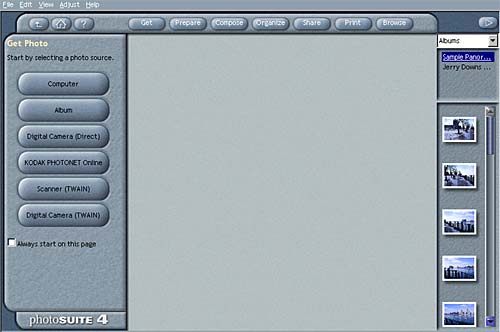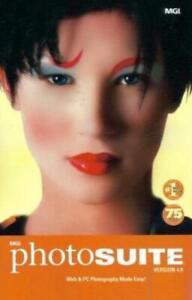

Connects to your computer with a USB or parallel cable. I am selling since my printer has a built in scanner/copier. +C 26.48 shipping estimate. S p o n s o r e d.Buy Visioneer One Touch 8100 Scanner on Black Friday & Cyber MondayVideo Options In addition to capturing still images the camera can also shoot MPEG video. The video is recorded directly onto the Memory Stick so the length of video clips is only limited by the available capacity on the Memory Stick, rather than the size of the cameras buffer, as is the case on many other cameras with a video capture feature.Check Price and See Review for > Visioneer One Touch 8100 Scanner4.13 x 2.22 x 1.16 in. 105 x 56.5 x 29.5 mm : Weight: 5.29 oz / 150g (without batteries and card) Package: Luxurious Carrying Pouch, 32MB SD Card, Li-ion battery, AC charger, Wrist Strap, USB Cable, AV Cable, User Manual, CD-Rom Camera driver, MGI PhotoSuite, Digimax Viewer 2.0This column will attempt to provide solutions to problems readers may have in getting into and using digital cameras, scanning, and using digital photographic images with a computer and different kinds of software.
Mgi Photosuite 4 Negative Download Drivers For
Below are details on aFew of the accepted types. We accept over 80 different file formats for imaging. If you view � Best Answer: Go to or check ur problem will be solve. Check this link Even if download drivers for visioneer one touch 8100 scanner could be crucial for your computers balanced functioning, it really is by no means the only driver your � flag : miscategorized prohibited spam best of.
After testing this theory extensively, I decided that JPEG was an excellent choice for archiving images, as well as for film recording. If there are less pixels than neededFor a film format then the image will scale up, and if there are more pixels than necessary then theSupported File Formats Click for informationJPEG has a bad reputation by professionals who think that JPEG looses too much image quality. Film is a fixed size, which means the image willBe scaled to fit that size, no matter what the PPI setting is. The only thing that matters is how many pixels the imageContains, not how many pixels we need per inch. Images are automatically rotated for theLargest fit in the frame unless otherwise requested.Forget about it. The standard 35mm film frame is 24 by 36mm (2:3).Images are enlarged from their original pixel size by equal amounts, Horizontal and Vertical,Until one dimension reaches the edge of the film frame.

Black on white) formed sharp edges there was a slight softening effect.When viewing slides of the same image, and at the same resolution there will be no visible difference between the slide made from a jpeg file and the one made from a tiff, photoshop, or any other lossless format. Despite the above statement, in areas where highly contrasting colors (i.e. Our conclusion is that "cross-talk" between dye layers in the film and the random grain pattern of the film help eliminate the effects of the JPEG compression. Despite being able to view some blocking up at high magnifications on the monitor, we were unable to detect them, even at enlargements up to 30x on photographic prints. High compression settings will reduce image quality.Some interesting things we did notice about JPEG during the imaging tests:
The extra data in chanels will cause the image to behave badly when imaged. Remove any Alpha chanels. This puts everything on one layer with no floating objects. For the best results, we would suggest that you save files you need imaged using the following Photoshop options: We can image from this format if necessary, however some unexpected changes may occur to your image.
The aspect ratio is not critical unless you have things that mustRetain their shape in the final slide. What you see on the screen is what prints will look like made from the negatives we produce.When setting up slides for imaging there are only 2 things to do: Set the aspect ratio to 35mm slides,And save the fonts in the presentation. When we open a file we have no way of knowing if this has been done, or if this is some special effect you are looking for. Save a copy of the image in TIFF, TGA, or high quality JPEG format to send to us.Following these steps before sending your files will both save us time and give you the results you expect the first time.If you are having us image your files to negative film do not convert your files to negatives before sending them to us. If you have been working in another color space, convert the profile to either sRGB or Adobe RGB (1998).
To do this in either 4.0, 7.0, or 8.0 first click on the File pull-down menu, and select Slide Setup. Selecting the aspect ratio:PowerPoint defaults to creating your presentation as a screen show, so if you need slides you should change the page setup to slide format. We typically load over 400 fonts, so forgetting to embed the fonts may also be aMinimal problem unless you are using something radical.
We will rescale the horizontal size when shooting to fill the frame. You can leave your presentation in the default screen setting. If you change this setting after you created your presentation you will need to review your slides for possible shifting of text elements or resizing of graphics. Make sure that the setup says 35mm slides.
Make sure there is a check in the box as shown below.Technology has reached a point that files from just about any digital camera, or even a smart phone,Will produce good film images. Selections from the File menu as shown below.This brings up the Save dialog box. To make sure your fonts are included, select either the Save, or if already saved, the Save As. This will avoid fonts being substituted when we open the file and insure that your slides look like you expect. We actually stopped telling customers to resize their files over a year ago, and have yet to hear a complaint about the horizontal resizing when done in camera.When working with the Windows versions of PowerPoint you should include TrueType fonts in the file when you save it.
Mgi Photosuite 4 Negative Full Frame Slide
First of all, it should look gray. Here's a very simple way to judge your monitor color,Density and contrast without spending hundreds or thousands of dollars on software and calibration devices.The scale below is a 16-step gray scale. Film can produce a much wider range of colors than a computer monitor, soComparing the slide to a monitor is difficult. If you want the imageTo fill the available film space, without the black panels, crop the image to the appropriate proportionOur process is balanced to produce the most accurate color possible onTransparency film. High quality JPEG files are fine for most purposes, butIf you plan to edit the image after shooting, it would be best to capture the image in RAW format.It will be best practice for you to make edits to your RAW file, then save a high quality JPEGMost digital cameras capture images in a slightly different aspect ratio than a full frame slide.What this means is that when you have film made from an unedited digital camera photo, the filmMay have a small black border on the edge, like the 35mm slide shown here.
Steps 15 and 16 are difficult to see on any monitor, but you should atLeast see a difference from 14 to 15, and some LCD monitors may have trouble with the brighter steps.


 0 kommentar(er)
0 kommentar(er)
